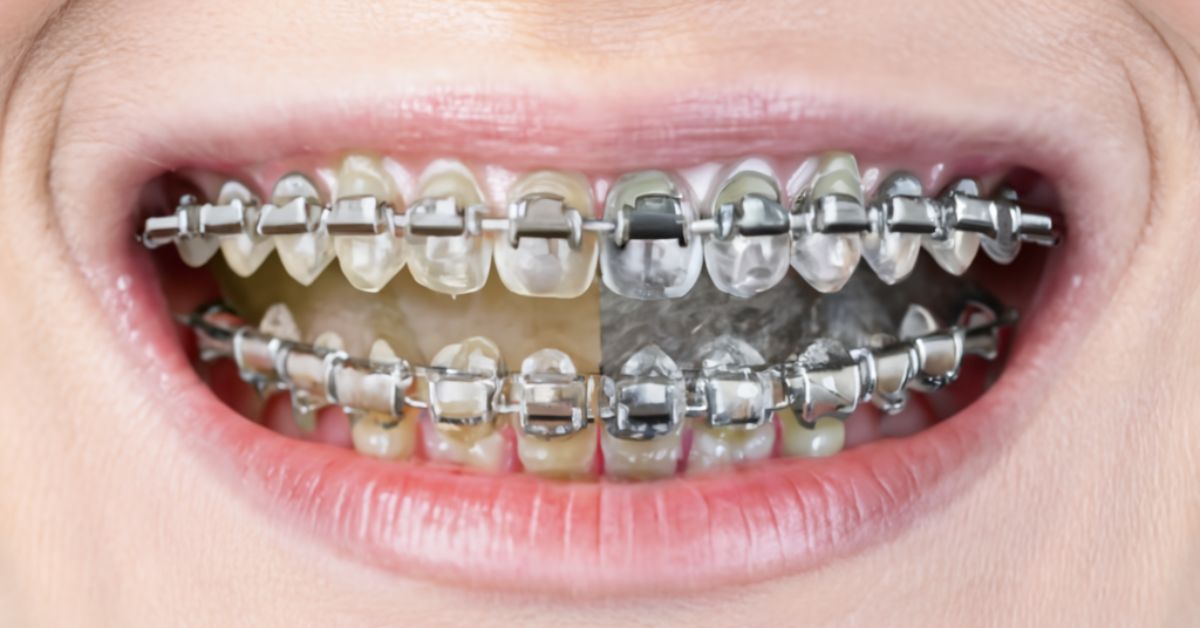Orthodontic treatment has come a long way over the years, offering patients multiple options to straighten their teeth. Among the most popular choices are Invisalign and traditional metal braces. Both options effectively align teeth, but they operate using different mechanisms. To make an informed decision, it’s crucial to understand how each treatment works, their pros and cons, and which one may be right for you. If you’re considering orthodontic treatment, a consultation with a professional like Tollgate Orthodontics can help you determine the best option based on your needs.
What is Invisalign?
Invisalign is a modern orthodontic treatment that uses a series of clear, removable aligners to gradually straighten teeth. These aligners are custom-made to fit the patient’s teeth and are replaced every few weeks to keep pace with the teeth’s movement. Unlike traditional braces, Invisalign aligners are made from a smooth, clear plastic material that is virtually invisible when worn. This makes them a popular choice for individuals who seek a more discreet orthodontic option.
How Traditional Braces Work
Traditional braces, on the other hand, involve brackets, wires, and rubber bands that are permanently attached to the teeth. These components work together to gradually move the teeth into their desired positions. The brackets are affixed to each tooth, and the wire connecting them applies pressure on the teeth, shifting them over time. Adjustments to the wire are typically made every few weeks to ensure continuous movement.
Customization and Treatment Planning
Both Invisalign and traditional braces require a thorough assessment by an orthodontist to develop a treatment plan. However, Invisalign’s customization is more advanced. Using 3D scanning technology, an orthodontist can create a precise digital map of the teeth. This digital model is used to design a series of aligners that move the teeth in small increments. Traditional braces require physical molds and X-rays to create a plan, and adjustments are often made based on the orthodontist’s ongoing observations.
Aesthetic Considerations
One of the major differences between Invisalign and traditional braces is aesthetics. Invisalign aligners are clear and nearly invisible when worn, making them highly appealing to adults and teens who are self-conscious about the appearance of metal braces. Traditional braces, in contrast, are visible and can be a source of discomfort for some patients, especially in social or professional settings.
Comfort and Convenience
Invisalign aligners are generally considered more comfortable than traditional braces. Because they are smooth and made of flexible plastic, they are less likely to irritate the inside of the mouth. Additionally, they can be removed for eating, brushing, and flossing, making it easier to maintain oral hygiene. Traditional braces, with their brackets and wires, can cause discomfort, especially after adjustments. Cleaning around the metal components can also be challenging, requiring special tools and more attention to oral care.
Treatment Duration
Invisalign treatment time can vary depending on the complexity of the case, but it often takes less time than traditional braces. For many patients, Invisalign treatment lasts about 12 to 18 months, while traditional braces might require 18 months to 3 years to achieve similar results. However, the exact duration depends on the severity of the orthodontic issues, the patient’s adherence to the treatment plan, and how often aligners are worn.
Maintenance and Adjustments
Invisalign aligners need to be switched out every 1 to 2 weeks, which gradually moves the teeth into the correct position. Regular check-ups with an orthodontist are still necessary, but the frequency of adjustments is typically less than with traditional braces. Traditional braces require more frequent visits to the orthodontist to tighten or adjust the wires. These adjustments can sometimes cause discomfort, and patients may need to avoid certain foods that could damage the braces.
Effectiveness for Different Orthodontic Issues
Both Invisalign and traditional braces are effective for a wide range of orthodontic issues, including overcrowded teeth, gaps, underbites, overbites, and crossbites. However, traditional braces are often recommended for patients with more complex dental issues, such as severe tooth rotations or significant misalignments, as the metal braces can provide more precise control over tooth movement. Invisalign is typically ideal for mild to moderate dental issues, though advancements in Invisalign technology have allowed it to address more complicated cases as well.
Cost Comparison
Cost is a significant factor when considering orthodontic treatment. Invisalign treatment typically costs more than traditional braces, with the price varying based on factors such as the length of treatment, geographic location, and the complexity of the case. However, some patients find the benefits of Invisalign—such as its aesthetic appeal and comfort—justify the higher cost. Traditional braces may be more affordable, but the ongoing maintenance and potential need for additional treatments could add to the total cost.
Conclusion
When deciding between Invisalign and traditional braces, it is important to consider factors such as aesthetic preferences, comfort, treatment duration, and the severity of the orthodontic issue. Invisalign offers a more discreet, comfortable option for those with mild to moderate dental problems, while traditional braces may still be the best choice for complex cases. An experienced orthodontist, such as those at Tollgate Orthodontics, can help guide you through the decision-making process, ensuring you select the treatment that aligns with your needs and lifestyle.


